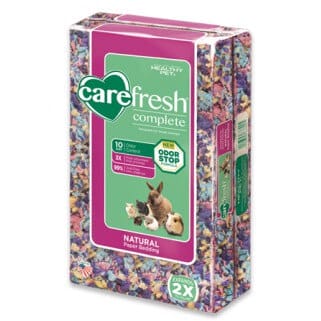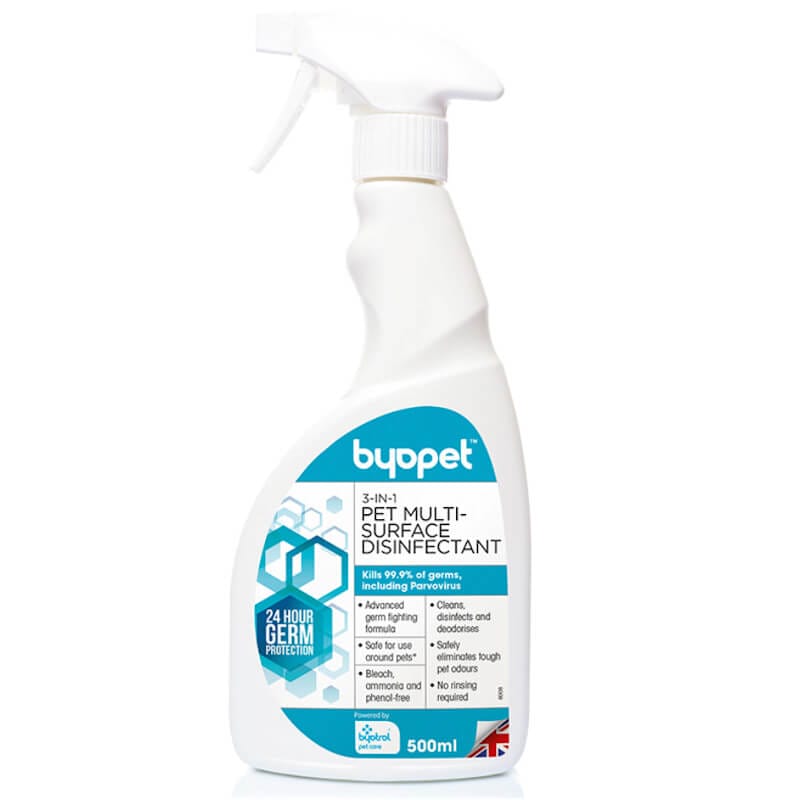
- Understanding the different types of hamster poop is important for effective cleaning.
- Preparing for cleaning includes gathering supplies and protecting yourself from potential health hazards.
- Regular cleaning of the hamster cage is crucial for maintaining a healthy environment.
- Effective cleaning methods include spot cleaning, deep cleaning, and using natural cleaning solutions.
- Stubborn stains can be removed with a combination of vinegar and baking soda or a pet-safe enzymatic cleaner.
Understanding Hamster Poop
Hamsters are adorable and fascinating pets, but their poop can be a bit of a challenge to deal with. As a responsible hamster owner, it’s important to understand the characteristics of hamster poop and the importance of proper cleaning. Hamster poop is typically small, round, and dark in color, and it can vary in size and texture depending on the hamster’s diet and health.
This natural byproduct of their digestive system is an important indicator of their overall well-being. Maintaining a clean and healthy environment for your hamster is crucial for their physical and mental well-being. Regular cleaning of hamster poop helps to prevent the buildup of odors, the spread of bacteria, and the risk of respiratory issues or other health problems.
Proper poop cleaning is essential for your hamster’s well-being. Hamsters are naturally clean animals, and they prefer to live in a tidy environment. By regularly cleaning their poop, you can help ensure that your hamster’s living space remains fresh and comfortable.
This not only benefits your furry friend but also helps to create a more pleasant living environment for you and your family. Neglecting to clean the hamster’s poop can lead to the buildup of odors, the spread of bacteria, and the potential for respiratory issues or other health problems. Therefore, it’s crucial to make poop cleaning a priority in your hamster’s care routine.
Hamsters are delicate creatures, and their health and well-being are directly tied to the cleanliness of their living environment. By understanding the characteristics of hamster poop and the importance of proper cleaning, you can take steps to ensure that your hamster’s cage remains a safe and comfortable space.
This not only benefits your furry friend but also helps to create a more pleasant living environment for you and your family. With the right approach and a little bit of effort, you can keep your hamster’s poop under control and maintain a healthy, happy pet.
Preparing for Hamster Poop Cleaning
Before you can tackle the task of cleaning your hamster’s poop, it’s important to gather the necessary supplies and establish a consistent cleaning routine. Gathering the right cleaning supplies is crucial for ensuring that the process is efficient and effective. You’ll need gloves to protect your hands, a small scoop or brush to remove the poop, and a disinfectant solution to clean the cage. It’s important to choose cleaning products that are safe and non-toxic for your hamster, as their health and well-being are of the utmost importance.
Establishing a regular cleaning routine is also key to maintaining a clean and healthy environment for your hamster. The frequency of cleaning will depend on the size of your hamster’s cage and the amount of poop they produce. As a general guideline, it’s recommended to spot clean the cage daily and perform a more thorough cleaning every 1-2 weeks. By developing a consistent cleaning schedule, you can ensure that your hamster’s living space remains fresh and comfortable, and you can prevent the buildup of odors and the spread of bacteria.
Preparing for hamster poop cleaning may seem like a daunting task, but with the right supplies and a consistent routine, it can be a manageable and even rewarding process. By taking the time to set up your cleaning station and establish a schedule, you can ensure that your hamster’s living environment remains clean and healthy, which in turn will contribute to their overall well-being and happiness. With a little bit of planning and dedication, you can keep your hamster’s poop under control and maintain a happy, healthy pet.
Cleaning Hamster Cage
Cleaning the hamster cage is a crucial step in maintaining a healthy and comfortable living environment for your furry friend. The first step in this process is to carefully remove any soiled bedding from the cage, taking care not to disturb your hamster. It’s important to dispose of the soiled bedding in a responsible manner, following the guidelines outlined in the “Proper Disposal of Hamster Waste” section.
Once the soiled bedding has been removed, it’s time to move on to spot cleaning. Using a small scoop or brush, carefully remove any visible poop from the cage. Pay close attention to areas where your hamster is most likely to defecate, such as the corners or designated potty areas. This regular spot cleaning helps to prevent the buildup of odors and the spread of bacteria, ensuring that your hamster’s living space remains fresh and comfortable.
Cleaning the hamster cage is a delicate and important task, and it requires a gentle touch and a keen eye. By carefully removing soiled bedding and performing regular spot cleaning, you can help to maintain a clean and healthy environment for your furry friend. This not only benefits your hamster’s well-being but also contributes to a more pleasant living space for you and your family.

If you’re looking for a way to improve your pet’s bedding, you might want to consider investing in high quality bedding like Carefresh Complete Natural Paper Bedding Confetti. This bedding is made from natural paper fibers and is designed to be 3 times more absorbent than other types of bedding.
This means that it can help keep your pet’s living space cleaner and drier for longer periods of time. Additionally, Carefresh Complete Natural Paper Bedding Confetti is also 3 times longer at controlling odor, which can help keep your pet’s living space smelling fresh and clean.
With these benefits, this bedding is a great choice for pet owners who want to provide their pets with a comfortable and hygienic living environment.
Effective Cleaning Methods
In addition to the regular spot cleaning of your hamster’s cage, it’s important to also incorporate more thorough cleaning methods to ensure a deep and effective clean. One of the most important steps in this process is disinfecting the cage. Mix a safe and effective disinfectant solution, such as a diluted vinegar or a pet-safe cleaning product, and use a clean cloth or paper towel to wipe down the entire cage, including the walls, floor, and any accessories.

Byopet 3 in 1 Multi-Surface Disinfectant is a highly effective solution for keeping your hamster’s cage clean and germ-free. This powerful disinfectant is designed to kill up to 99.9% of germs including Parvovirus, bacteria, and viruses that may be present in your pet’s living space.
Not only does it eliminate harmful microorganisms, but it also deodorizes the cage, leaving it smelling fresh and clean. With its multi-surface formula, this disinfectant can be used on a variety of surfaces, including plastic, metal, and glass.
Periodically, it’s also a good idea to perform a more thorough cleaning by removing all the bedding and accessories from the cage. This allows you to wash the cage with the disinfectant solution, scrubbing any stubborn areas to ensure a deep clean. This more comprehensive cleaning helps to eliminate any lingering odors, bacteria, or stains, and it ensures that your hamster’s living space remains fresh and healthy.
Effective cleaning methods are essential for maintaining a clean and safe environment for your hamster. By incorporating both regular spot cleaning and more thorough disinfecting and deep cleaning, you can help to prevent the buildup of odors, the spread of bacteria, and the risk of respiratory issues or other health problems. With a little bit of effort and the right cleaning techniques, you can keep your hamster’s cage in tip-top shape and ensure their overall well-being.
Dealing with Stubborn Stains
Despite your best efforts, you may occasionally encounter stubborn stains in your hamster’s cage that are particularly difficult to remove. These tough stains can be frustrating to deal with, but with the right techniques and a little bit of patience, you can tackle them effectively.
The first step in dealing with stubborn stains is to identify the areas where they are most likely to occur. Pay close attention to the corners of the cage or any designated potty areas, as these are the spots where your hamster is most likely to leave behind stubborn poop stains. Understanding where these stains are most likely to occur can help you to be proactive in your cleaning efforts and address them before they become too difficult to remove.
When it comes to tackling stubborn stains, a small brush or toothbrush can be an invaluable tool. Use the disinfectant solution you’ve prepared and gently scrub the stained areas, allowing the solution to sit for a few minutes before scrubbing to help break down the stain. This gentle yet persistent approach can be highly effective in removing even the most stubborn poop stains from your hamster’s cage.
Dealing with stubborn stains can be a bit of a challenge, but with the right tools and techniques, you can conquer them and maintain a clean and healthy environment for your furry friend. By identifying problem areas and using a targeted approach, you can keep your hamster’s cage looking its best and ensure their overall well-being.
Maintaining a Healthy Hamster Environment
Maintaining a healthy and comfortable living environment for your hamster is essential for their overall well-being. One of the key aspects of this is providing fresh bedding on a regular basis. Replace the bedding in the cage regularly to ensure a clean and comfortable space for your furry friend. Choose a high-quality, absorbent bedding material that is safe for your hamster and easy to clean.
In addition to providing fresh bedding, it’s important to monitor your hamster’s health by observing their poop. Pay attention to any changes in color, consistency, or frequency, as these can be indicators of potential health issues. If you notice any concerning changes, it’s important to consult with a veterinarian to ensure that your hamster is receiving the appropriate care and treatment.
Maintaining a healthy hamster environment is a multi-faceted task that requires diligence and attention to detail. By providing fresh bedding, monitoring your hamster’s health, and addressing any issues promptly, you can help to ensure that your furry friend remains happy, healthy, and thriving in their living space.
Preventing Odors and Keeping the Cage Fresh
Keeping your hamster’s cage fresh and free of odors is an important aspect of maintaining a healthy and comfortable living environment. Proper ventilation is key to preventing the buildup of odors. Ensure that your hamster’s cage has adequate ventilation, either through the use of a small fan or by opening a window in the room where the cage is located. This helps to improve air circulation and prevent the accumulation of unpleasant smells.
In addition to proper ventilation, there are also other odor-neutralizing techniques you can employ to keep your hamster’s cage fresh. Consider using a pet-safe odor-eliminating spray or baking soda to help neutralize any lingering odors. These products can be particularly helpful in areas where your hamster is most likely to leave behind stubborn poop stains or odors.
Preventing odors and maintaining a fresh, clean environment for your hamster is an ongoing process that requires diligence and attention to detail. By incorporating proper ventilation and utilizing odor-neutralizing products, you can help to ensure that your hamster’s living space remains pleasant and comfortable for both you and your furry friend.
Proper Disposal of Hamster Waste
Proper disposal of hamster waste is an important aspect of maintaining a clean and healthy environment for your pet. When it comes to disposing of soiled bedding and poop, it’s crucial to do so in a responsible manner. Carefully place the soiled bedding and poop in a sealed bag or container before disposing of it.
It’s important to check with your local authorities or waste management service to ensure that you are following the appropriate guidelines for disposing of hamster waste. Avoid flushing hamster poop down the toilet, as it can potentially harm the environment and plumbing system. Instead, explore eco-friendly disposal options, such as composting the waste or using a pet waste disposal service.
Proper disposal of hamster waste is not only important for the environment but also for the health and safety of your family and your furry friend. By taking the time to dispose of the waste responsibly, you can help to prevent the spread of bacteria and minimize the risk of any potential health issues.
Frequently Asked Questions about Hamster Poop Cleaning
As a responsible hamster owner, you may have some questions about the proper cleaning and maintenance of your furry friend’s living space. Here are a few frequently asked questions that can help guide you in your efforts:
What are the signs of a healthy hamster poop?
Healthy hamster poop should be small, round, and dark in color. If you notice any changes in the color, consistency, or frequency of your hamster’s poop, it’s important to consult with a veterinarian to ensure that there are no underlying health issues.
What is hamster poop?
Hamster poop is the feces excreted by hamsters, which are small rodents commonly kept as pets.
Why is cleaning hamster poop important?
Cleaning hamster poop is important to maintain a clean and hygienic living environment for both the hamster and its owner. Hamster poop can contain harmful bacteria and parasites that can cause health problems.
How often should I clean my hamster’s cage?
It is recommended to clean your hamster’s cage at least once a week. However, if your hamster is particularly messy or has a health condition, you may need to clean the cage more frequently.
What supplies do I need to clean hamster poop?
To clean hamster poop, you will need gloves, a dustpan and brush, paper towels, disinfectant spray, and a trash bag.
How do I clean hamster poop from the cage?
To clean hamster poop from the cage, first, put on gloves. Then, use a dustpan and brush to sweep up the poop and any bedding that is soiled. Dispose of the waste in a trash bag. Next, use paper towels and disinfectant spray to clean the area where the poop was located.
How do I prevent my hamster from pooping outside of its cage?
To prevent your hamster from pooping outside of its cage, make sure the cage is large enough for the hamster to move around comfortably. Provide plenty of bedding and a designated area for the hamster to use as a bathroom. Additionally, make sure your hamster is getting enough exercise and is not stressed or anxious.
By addressing these frequently asked questions, you can gain a better understanding of the proper cleaning and maintenance of your hamster’s living space. Remember, maintaining a clean and healthy environment is crucial for your furry friend’s well-being, and with the right approach, you can keep your hamster’s poop under control and ensure their overall happiness and health.





